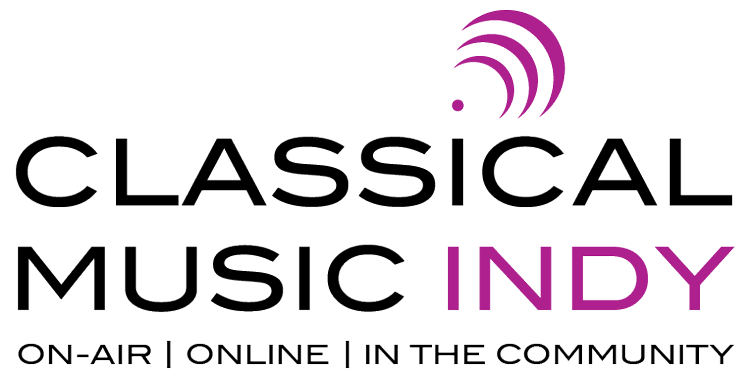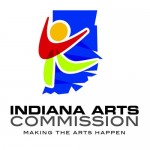On our 50th anniversary, we celebrate radio’s power to share music that stirs our imaginations, gives us refuge and transports us to places we’ve never been before. Keep reading and see how the digital age is changing the way we listen and expanding our taste in music. By Crystal Hammon, Adapted from Classical Music Indy’s NOTE Magazine.
Radio Isn’t Dead
The digital age has its own mantra for career success: change or die. Most college students internalize these words as a rule for survival, but the 2018 graduates of the radio program at University of Indianapolis are playing by a slightly different set of rules than their peers. By the time their diplomas arrived in May, half of them had jobs in the field—many as on-air talent.
They’re the future of radio, and they’ll succeed by delivering the same special sauce that has kept radio vibrant for the past 100 years. “Radio has always been an interactive medium—much more so than all the others,” says Scott Uecker, a veteran broadcaster and faculty member at the University of Indianapolis electronic media program. “We are the intimate media we have always been. Radio is live and it’s local. If we do it well, we connect with listeners like no one else can.”
No one denies the onslaught of competition coming from new media. But radio is still an industry darling in terms of advertising revenues, thanks to the size and scope of its listening audience. No other medium enjoys the daily relationship Americans have with AM/FM radio.
With 270 million listeners each week, radio has a bigger audience than television, smartphones, computers or tablets, according to the 2018 Audio Today Report by The Nielsen Company. Ninety-three percent of adults 18 and over are tuning in to radio. What’s more: its robust audience draws people of every age, gender and ethnicity.

Nothing trumps local radio talent
Uecker says the fuel for radio’s enduring popularity is the personal connection between each listener and the on-air personalities that bring us music. For that reason, the future of radio may depend on the industry’s ability to cultivate new on-air personalities who can entertain, inform and relate to listeners.
That’s especially true for classical music, which has only a fraction of the total listening audience. “Yes, the music is incredibly important, because that’s how people decide what stations to preset in their cars, but what we put between the music must be valuable to listeners because there are so many similar and readily-available substitutes for radio,” says Uecker, who also serves as general manager at WICR on the University of Indianapolis campus.
Uecker believes radio alternatives will never be able to outperform local radio talent doing what they do best. “Every station in the market can play the exact same songs if they want to,” he says. “At WICR, if anyone wants to come on the air [in the local market] and go against us in the classical format, we’ve got Michael Toulouse. We’re going to win. People are listening to hear what he has to say about the music.”
Toulouse is the program director and host of Classical Music Indy’s signature program, Classical Music with Michael Toulouse. His syndicated program airs on WICR as well as other stations. “I’ve been around long enough to witness a lot of change in broadcasting, but no matter what the current technology is, people will always be communicating,” Toulouse says. “That’s our real job and our bigger mission—communicating about the music.”
Covering central Indiana’s classical music scene gives Toulouse a strong local following, but he also hears from people who follow from afar through online listening and syndicated broadcasts of his show. “As I speak into the microphone, I want people to have the sense that I am talking directly to them, that I’m a companion, listening along with them.”
Cultivating An Appetite For Classical Music
For Classical Music Indy and other like-minded organizations that want to spread passion for classical music, radio stations like WICR make natural allies. Radio and online listening are still the most popular ways to consume audio, and they make classical music affordable and accessible to everyone. Radio’s classical music audience has been stable for the past five to seven years, and stations that play it are committed to recruiting new fans.
“Our challenge at WICR is the same as any performing classical music group,” Uecker says. “We have to find ways to get younger audiences to listen to the music, and we hope some of them will develop a love for it. It’s not that young people don’t like classical music; they just don’t know it.”
In the local market, one of the most visible champions for giving people their first taste of classical music is Kyle Long, host of a public radio program at WFYI, Cultural Manifesto. “My show isn’t tied to any particular genre or time period,” Long says. “I will have a classical musician or composer in the same episode as a rapper from the community. I am trying to engage a wide audience and encourage people to open up and listen to things outside their typical diet of music.”
As America’s broadest and most inclusive path to classical music, public radio has a growing audience, especially among listeners who are bored by corporate dominance and generic ideas. Their craving for local content gives Long the creative freedom he needs to explore arcane topics and to mine the local music ecology. “The same impulse that drives people toward the local food movement is driving them to the kind of radio programming we’re doing at WFYI and the kind of programming Classical Music Indy is doing, as well.”







Leave a Reply